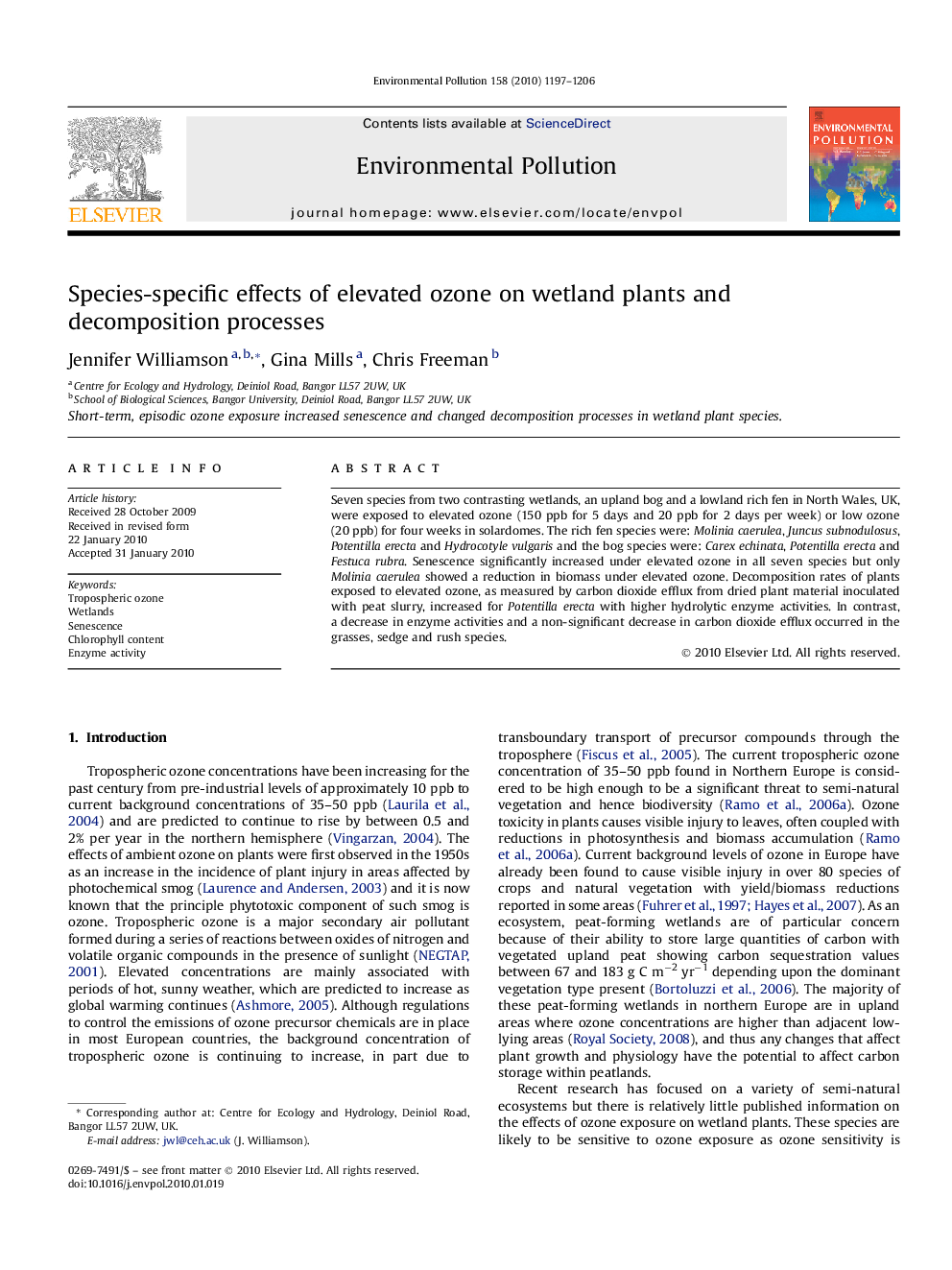| Article ID | Journal | Published Year | Pages | File Type |
|---|---|---|---|---|
| 4426092 | Environmental Pollution | 2010 | 10 Pages |
Seven species from two contrasting wetlands, an upland bog and a lowland rich fen in North Wales, UK, were exposed to elevated ozone (150 ppb for 5 days and 20 ppb for 2 days per week) or low ozone (20 ppb) for four weeks in solardomes. The rich fen species were: Molinia caerulea, Juncus subnodulosus, Potentilla erecta and Hydrocotyle vulgaris and the bog species were: Carex echinata, Potentilla erecta and Festuca rubra. Senescence significantly increased under elevated ozone in all seven species but only Molinia caerulea showed a reduction in biomass under elevated ozone. Decomposition rates of plants exposed to elevated ozone, as measured by carbon dioxide efflux from dried plant material inoculated with peat slurry, increased for Potentilla erecta with higher hydrolytic enzyme activities. In contrast, a decrease in enzyme activities and a non-significant decrease in carbon dioxide efflux occurred in the grasses, sedge and rush species.
